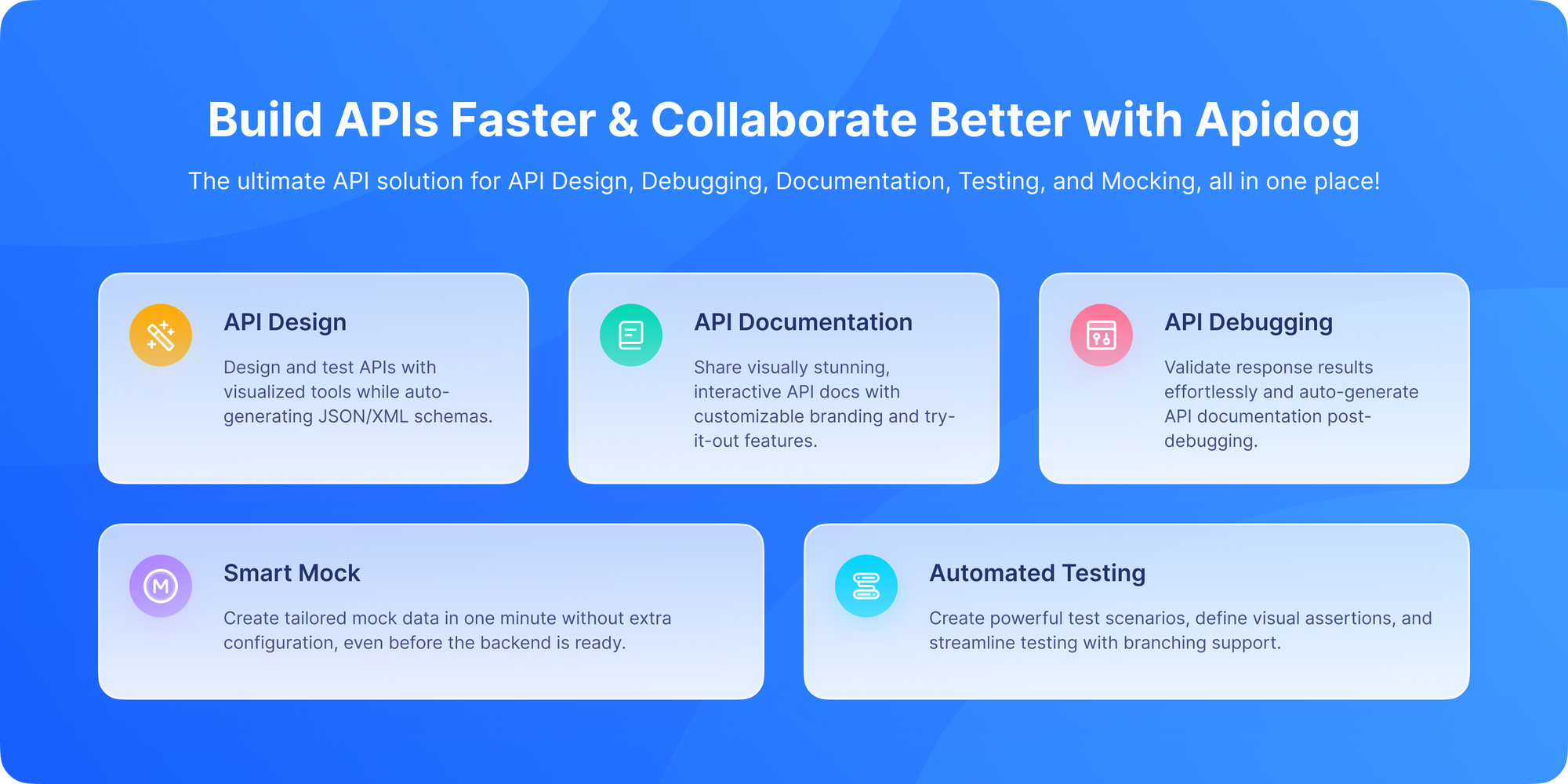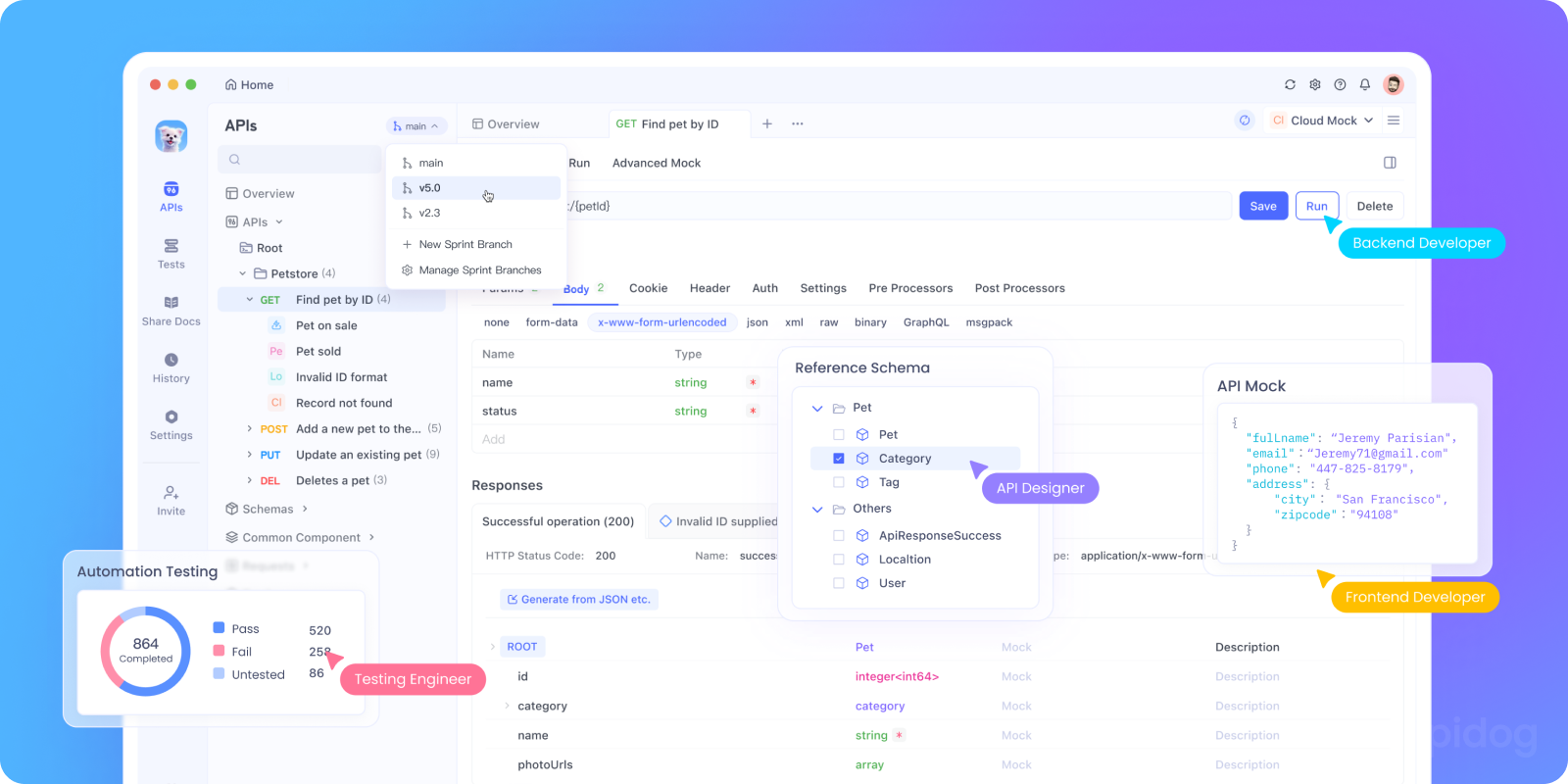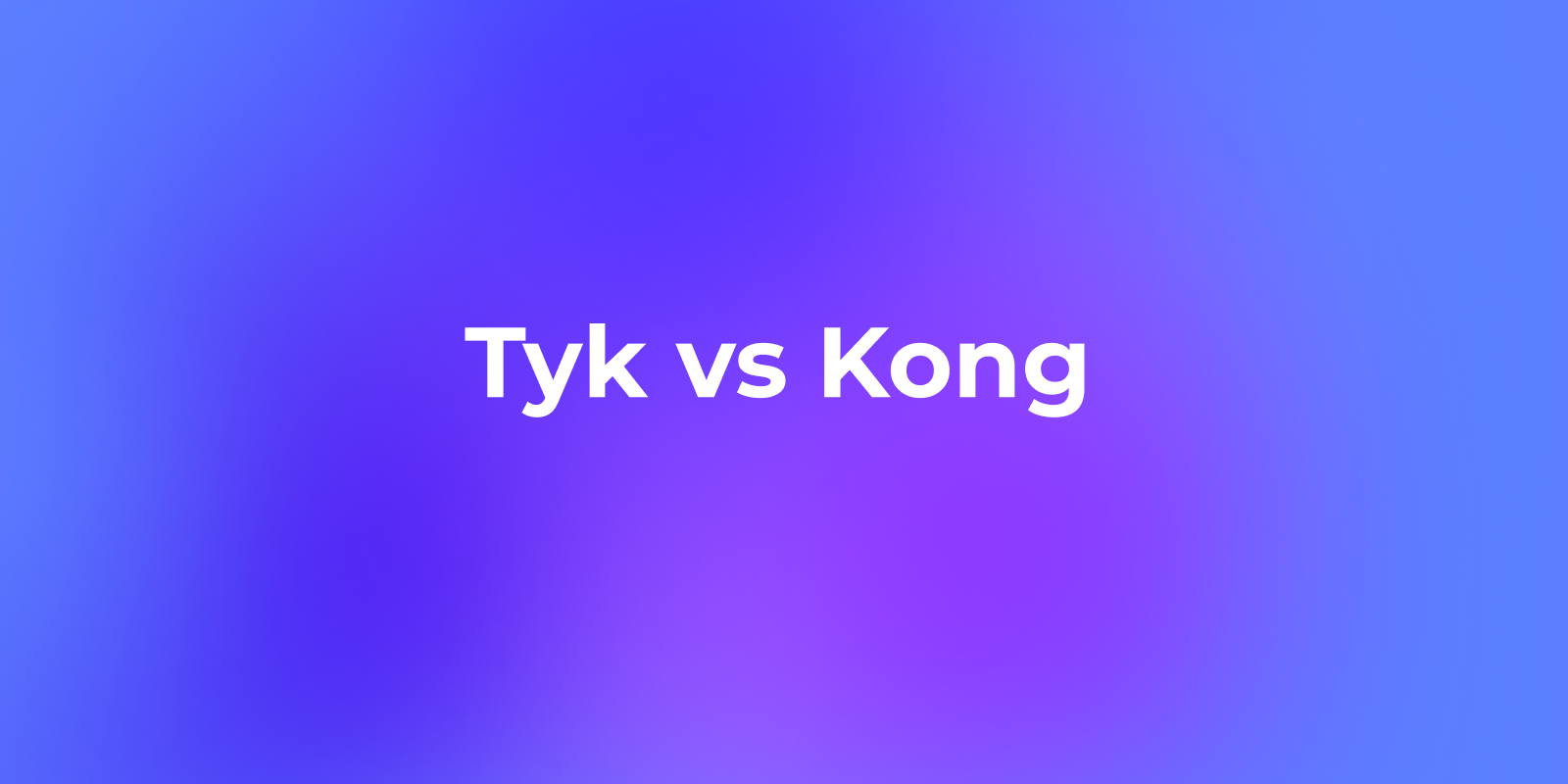Choosing the right API gateway can be a game-changer for your development and operations. If you’ve been searching for the perfect API gateway for your project or organization, chances are you’ve stumbled upon Tyk and Kong. They’re both powerhouse API gateway solutions, widely respected in the developer and enterprise communities.
In 2025, Tyk and Kong stand out as two of the most popular API management platforms, each with its strengths and quirks. From deployment flexibility and performance to feature sets and community support, they offer compelling options. But how do you decide which one fits your needs best?
We’ll compare them feature by feature, look at their pros and cons and explore real-world use cases so you can make a confident choice. And because API management doesn’t stop at the gateway, I’ll also show you how tools like Apidog can complement either solution by giving you a streamlined way to design, test and document your APIs all in one place.
Want an integrated, All-in-One platform for your Developer Team to work together with maximum productivity?
Apidog delivers all your demands, and replaces Postman at a much more affordable price!
Introduction to API Gateways
If APIs are the lifeblood of modern software, API gateways are the traffic control towers that keep everything flowing smoothly.
An API gateway sits between your clients and your backend services. It:
- Routes requests
- Enforces authentication and authorization
- Monitors and logs traffic
- Handles caching and rate limiting
- Transforms requests and responses
In short, it’s the front door to your APIs.
Now, the market is full of options: AWS API Gateway, Apigee, Azure API Management, but Tyk and Kong have carved out a special place thanks to their open-source roots and developer-focused approach.
What is Tyk?

Tyk is a modern, cloud-native API management platform and gateway renowned for its flexibility, lightweight architecture, and developer-friendly approach. What I appreciate most about Tyk is the openness of its platformit’s fully open-source without hidden features locked behind paywalls.
It’s known for:
- Lightweight deployment minimal resource footprint
- Powerful API management features without heavy vendor lock-in
- Multi-cloud and on-premise flexibility
Key highlights about Tyk:
- Extensive protocol support: not only REST but also GraphQL, gRPC, and asynchronous APIs
- API-first design: powerful developer portal and clear API documentation tools
- Security out of the box: supports mTLS, OAuth2, OpenID Connect, and JSON schema validation
- Deployment flexibility: Cloud, on-premises, or hybrid with easy Kubernetes integration
- CI/CD-friendly: supports APIs as code and smooth automation
- Performance: lightweight gateway with excellent scaling across cloud providers
- Customer support: praised for responsiveness and technical expertise
Tyk comes in three flavors:
- Tyk Open Source – free and self-managed
- Tyk Pro – paid, with enterprise-grade features
- Tyk Cloud – fully managed SaaS
From my experience, Tyk’s user-friendly dashboard and clean architecture make it a joy to set up and manage APIs, especially if you want transparent pricing and solid multi-cloud support.
Fun fact: Tyk is often praised for its developer-first documentation and straightforward config files.
What is Kong?

Kong is another open-source API gateway, but with a strong focus on high performance and extensibility.
Kong started as an open-source API gateway but has since evolved into a comprehensive API and microservices management platform. Kong is widely recognized for its plugin-based architecture that allows extensive customizations without modifying the core system.
It’s built on NGINX and Lua, making it blazing fast and highly customizable.
Here’s why Kong stands out:
- Performance leader: Known for high throughput and low latency, ideal for large-scale environments
- Modular plugin system: Over 400 plugins available for security, monitoring, traffic control, and more
- Multi-cloud and hybrid support: Deploys on-prem, cloud, Kubernetes, or as managed SaaS (Kong Cloud)
- API development toolchain: Includes Kong Konnect platform, Kong Mesh, and developer tools like Kong Insomnia
- Strong community and enterprise backing: Recognized by Gartner and G2 as a market leader
- Security & governance: Robust OAuth, JWT, RBAC, and policy enforcement capabilities
- Integration ecosystem: Well-suited for microservices, service meshes, and DevOps automation
Kong offers:
- Kong Gateway (OSS) – the free, open-source version
- Kong Gateway Enterprise – with advanced security, analytics, and enterprise support
- Kong Konnect – their SaaS platform for API management
Kong is famous for its plugin architecture, letting you extend it with security, monitoring and transformation features.
Kong’s flexibility is a double-edged sword: it enables tailored solutions but sometimes requires a steeper learning curve and enterprise packages for full features.
Head-to-Head Comparison: Tyk vs Kong
| Feature | Tyk | Kong |
|---|---|---|
| Open Source Core | Fully open-source without locked features | Open-source core, but many features in paid tiers |
| API Protocol Support | REST, GraphQL, gRPC, Async APIs | REST, GraphQL, gRPC |
| Deployment Options | Cloud, on-premises, hybrid, Kubernetes-native | Cloud, on-premises, hybrid, Kubernetes, SaaS |
| Plugin & Extensibility | Supports Lua, JS, and middleware customizations | 400+ plugins; extensible in Lua, Go, JS |
| Performance & Scalability | Lightweight, scales linearly with hardware | High performance but may not scale linearly |
| Security Features | mTLS, OAuth2, OpenID Connect, JSON schema validation | OAuth2, JWT, RBAC, rate limiting, circuit breakers |
| Developer Portal | Fully featured, customizable | Available, less mature than Tyk’s |
| CI/CD & DevOps Integration | Strong support for configuration as code | Good support with APIOps and GitOps |
| Community & Support | Strong and growing with responsive support | Larger user base, extensive ecosystem |
| Pricing Model | Transparent tiers with free open-source and usage-based plans | More complex pricing, free core, paid enterprise |
Security and Customization: Which Fits Your Needs?
If security is your top priority, both gateways offer robust features, but their approaches differ:
- Tyk excels at providing native security protocols out of the box, such as mTLS and OpenID Connect, with easy-to-configure JSON schema validation to thwart malformed requests.
- Kong, meanwhile, shines with its vast plugin marketplace, allowing you to tailor security policies including custom logic or integrations with high granularity.
If you want simple, ready-to-use security with minimal custom setup, Tyk is more straightforward. For complex architectures requiring bespoke or experimental security controls, Kong’s extensibility can be a huge advantage.
Developer Experience, Documentation & Support
Tyk offers a modern, clean UI with a very user-friendly developer portal something I’ve found especially nice for teams onboarding new developers quickly. It also provides straightforward API documentation and supports easy mocking.
Kong’s developer portal and UI have improved greatly but remain somewhat less intuitive without enterprise features. However, Kong’s massive community and significant investment by industry analysts like Gartner mean you get strong ecosystem support and lots of integrations.
Pricing-wise, Tyk offers clear, consumption-based pricing, and you can get started easily with its open-source core and trial cloud options. Kong’s pricing is more complex, often requiring conversations with sales teams to understand enterprise options and costs.
Pros & Cons
Tyk
Pros:
- Lightweight and fast
- Flexible deployment options
- Easy-to-use dashboard
- Rich security features
- Multi-language middleware support
Cons:
- Smaller plugin ecosystem than Kong
- Enterprise features locked behind Pro version
Kong
Pros:
- Extremely high performance
- Massive plugin ecosystem
- Highly customizable
- Large community and support network
Cons:
- More complex initial setup
- Some features require Enterprise edition
Performance Insights and Real-World Usage
Independent benchmarks show that while both Tyk and Kong perform well as API gateways, Tyk often outperforms Kong in real-world scenarios especially when complex policies like rate limiting and authentication are applied at scale. Tyk scales almost linearly with hardware upgrades, while Kong’s performance can plateau depending on core usage.
From my experience with high-volume APIs, Tyk’s efficiency means less infrastructure overhead and lower cloud costs. Kong’s rich plugin ecosystem makes it a favorite for teams wanting maximum flexibility and integration, but this sometimes adds operational complexity.
When to choose Tyk:
- Startups or mid-sized companies needing quick deployment
- Teams without heavy DevOps resources
- Projects requiring multi-language extensions
When to choose Kong:
- Large enterprises handling huge traffic
- Complex architectures needing fine-grained control
- API programs relying heavily on custom plugins
How Apidog Complements Tyk and Kong

While Tyk and Kong handle the gateway layer, they don’t fully solve the API lifecycle problem, things like API design, mock servers, collaboration and automated testing. No matter which gateway you choose, managing the API lifecycle smoothly is challenging.
That’s where Apidog comes in:
- Complete lifecycle management: Design, test, document and monitor APIs in one platform.
- No-code interface: Build API test cases, run security scans, and mock endpoints without scripting.
- Gateway integration: Apidog works seamlessly with Tyk, Kong and others to unify API management.
- Real-time monitoring and alerts: Spot issues early to maintain uptime.
- Team collaboration: Share API docs and test results with your entire team effortlessly.

In short:
Tyk/Kong = API traffic control.
Apidog = API design, testing and collaboration.
Put them together and you’ve got an end-to-end API powerhouse. Apidog removes the hassle and reduces the learning curve, letting you focus on building great APIs, not juggling tools.
Which One Should You Pick? Tyk or Kong?
When it comes to Tyk vs Kong, there’s no one-size-fits-all answer.
Choose Tyk if:
- You want a fully open-source platform with no hidden paid features.
- You need lightweight, fast, scalable API gateway performance.
- You prefer simple, well-documented native security features.
- You value ease of use and a clean, intuitive developer portal.
- Your project demands multi-cloud or hybrid deployments with clear pricing.
Choose Kong if:
- You need a plugin-rich ecosystem for maximum customization.
- Your architecture includes microservices, service meshes, or complex routing.
- You want a highly scalable solution backed by strong enterprise support.
- You are comfortable investing in more complex setups for tailored APIs.
- You leverage Kong’s cloud-native tools like Kong Mesh and Kong Insomnia.
Either way, pairing your gateway with Apidog will give you a smoother, more controlled API workflow from design to deployment.



